- Usage
- FAQ
Introduction
The Mirragen Wound Matrix is intended for use in the management of wounds. Wound types include: Partial and full-thickness wounds, pressure ulcers, venous ulcers, diabetic ulcers, chronic vascular ulcers, tunneled/undermined wounds, surgical wounds (donor sites/grafts, post-Moh's surgery, post laser surgery, podiatric, wound dehiscence), trauma wounds (abrasions, lacerations, first and second degree burns, skin tears) and draining wounds.
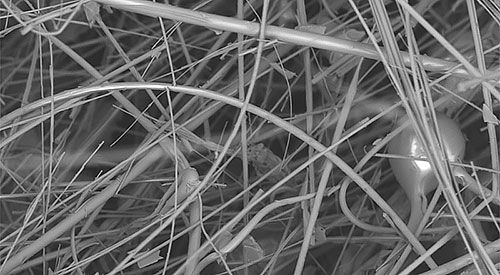
- A novel material composed of micron to submicron-sized bioactive borate- based glass fibers.
- Soft, moldable microstructure of bioactive, biocompatible and biodegradable glass fibers.
- Microstructure similar to fibrin clot.
- Structure filters and separates solids from liquid portions of body fluid (blood, extracellular fluids, platelets, & plasma).
- Highly porous, dynamic structure.
- Releases beneficial ions into the wound environment.
- Possesses components with antimicrobial, anti-inflammatory and angiogenic properties.

- Bioactive glass is a biocompatible, and degradable material that bonds directly to living tissue.
- These can be silicate, borate, or phosphate based glasses.
- Bioactive glasses bond to living tissue (hard and soft) because as the glasses degrade.
- They release calcium that reacts with phosphate in our body fluids and forms nanocrystalline HA, bone-like mineral.
- Several studies have shown significant anti-infective properties against bacteria and fungi in-vivo and in-vitro
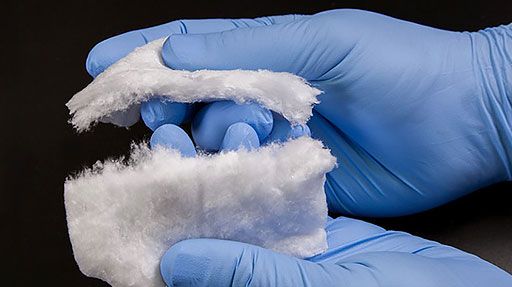
- First approved for human use in 2016, this is a new technology to the wound care space.
- Uses Developed at Missouri S&T in 2009.
- A degradable glass fiber as a temporary wound covering and tissue scaffold while eventually degrading into components found in body fluids.
- Glass fiber highly effective at insulating wound.
- Fiber structure allows gases to escape while absorbing fluids (5-10X by wt) and forms a moist environment for wound healing.
- Highly haemostatic due to microstructure and calcium release.
- Releases boric acid into wound for antipathogen effect.
- Versions have been doped with trace elements to enhance angiogenesis and antimicrobial effectiveness.

- Fibrous structure acts as a matrix for tissue growth.
- Mimics the fibrin clot to stimulate the healing cascade. "Traps" blood platelets, healing and growth factors, and other components to "empower" ana support healing.
- Borate glass fibers dissolve in wound fluid, releasing beneficial ions directly at the wound site, stimulating many cellular level activities that:
Improve blood (and oxygen) supply directly to the site.
- Stimulates growth factors, fibroblasts, enzymes and other healing factors.
- Stimulates growth of new blood vessels and soft tissue.
- Improves absorption of trace minerals.
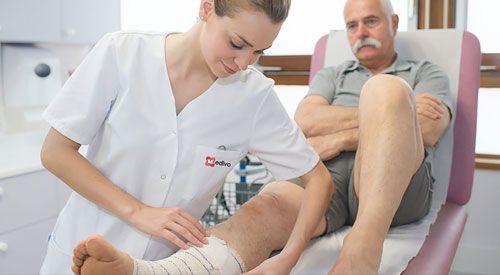
Though MIRRAGEN AWM is perfect for chronic and stalled wounds, it is a smart choice for many wound types.
Includes, but not limited to:
- Full or partial thickness ulcers
- Surgical sites and acute wounds
- Infected surgical sites
- Diabetic foot ulcers
- Pressure Injuries
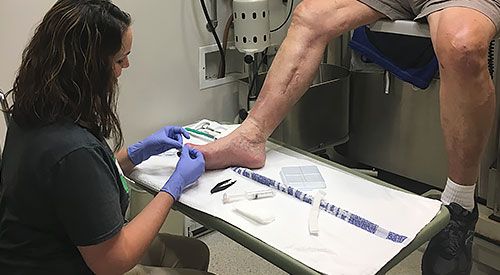
The MIRRAGEN Advanced Wound Matrix is intended for use in the management of wounds. Wound types include: Partial and full-thickness wounds, pressure ulcers, venous ulcers, diabetic ulcers, chronic vascular ulcers, tunneled/undermined wounds, surgical wounds (donor sites/grafts, post-Moh's surgery, post laser surgery, podiatric, wound dehiscence), trauma wounds (abrasions, lacerations, first and second degree burns, skin tears) and draining wounds.

MIRRAGEN Advanced Wound Matrix (AWM) is formulated to stimulate cellular activity and new tissue growth even in "old" wounds; allowing them to progress much like an acute wound.
Components of MIRRAGEN dissolve in wound fluid to stimulate healing through chemical reactions within the tissue.
- Helping the body's natural healing functions develop and regulate naturaf cellular activities.
- Neoangiogenesis is supported by the fibrous mesh matrix.
- MIRRAGEN has absorptive power to manage high exudates (400Xs).
- Keeps the wound bed clean, insulated (warm), and moist.
- Reduces debridement time, frequency of dressing changes, and healing time.
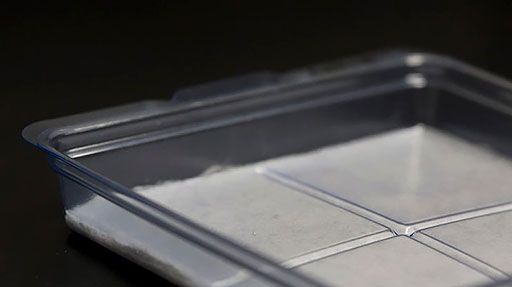
- Creates a moist, clean, warm environment.
- Provides hydration if dry or desiccated.
- Removes excess exudate.
- Prevents dessication and is nontraumatic.
- Provides protection to the periwound area.
- Allows for gaseous exchange.
- Impermeable to microorganisms / antimicrobial.
- Free of toxic or irritant particles.
- Does not release particles or fibers / biodegradable.
- Can conform to wound shape.
- Minimal pain during applications and removal - no removal required.
- Easy to use.
- Cost effective.
- Synthetic - no chance of disease transmission.
- No temperature constraints like many natural products have.
- Extremely long shelf life (5+ years).
- Can be used at all stages of wound healing process (hemostasis to remodeling).
Lets Get Started
composition, MIRRAGEN® is a revolutionary solution for the wound healing
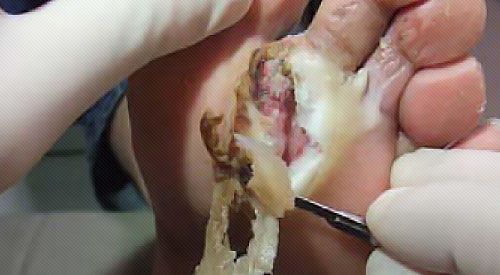
- Start the treatment process as you normally would.
- Clean the wound base and debride any necrotic or devitalized tissue.
- Blot away any excessive moisture.
- After this, need for further debridement is unlikely.

- Choose a MIRRAGEN AWM dressing size compatible with the wound size.
- Handling MIRRAGEN AWM
- Maintain aseptic technique with handling.
- Cut or tear dressing into workable size.
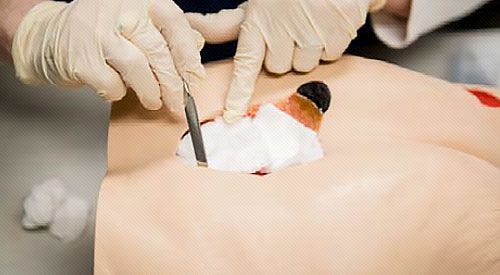
- To apply MIRRAGEN AWM, simply cut or tear the portion you need.
- Fill tunnels/sinus tracts and undermining first; a cotton tipped applicator may be helpful.
- Then, conform the product to the shape of the wound surface.
- When treating a large wound, gauze can be used as a "filler" as long as MIRRAGEN covers the wound surface.

When MIRRAGEN AWM comes into contact with wound fluid, it will absorb drainage and may quickly change appearance. By the next dressing change, the product may resemble wet or dry sand, and may be discolored.
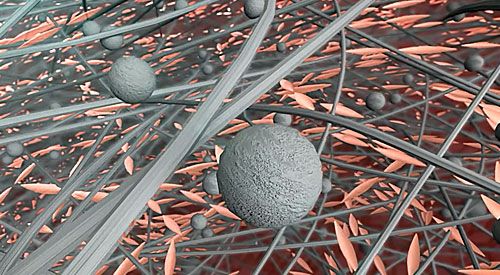
- As MIRRAGEN AWM becomes integrated into the wound base changes may be noted.
- Do not be alarmed if wound displays material with the appearance of slough.
- This is part of the process as MIRRAGEN incorporates wound components into the matrix material.
- Soon the matrix material will differentiate; granulation tissue will form, and become apparent.
- Disturbing the matrix may affect the healing process.
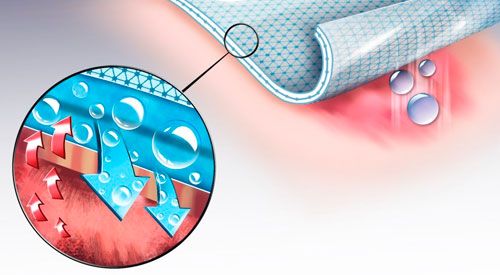
- Exudates consist of many components, including:
• Electrolytes • Nutrients • Proteins • Inflammatory mediators
• Protein digesting enzymes (MMPs) • Growth factors
• Waste products • Neutrophils • Macrophages • Platelets - Healthy wound fluids and components are balanced, to allow for:
• Granulation tissue deposition • Regrowth of blood vessels
• Provision of nutrients for cell metabolism • Cell proliferation
• Epithelialization • Diffusion of immune and growth factors
• Autolysis of necrotic tissue
• The prevention of wound bed desiccation

- Maintaining moisture balance for a healing environment is very important.
- You may add normal saline directly into the wound bed or into MIRRAGEN AWM to increase moisture level, if needed.
- It is also appropriate to moisten the product prior to application if you find this easier or more appealing.
- MIRRAGEN AWM absorbs up to 400 times its weight in wound drainage.
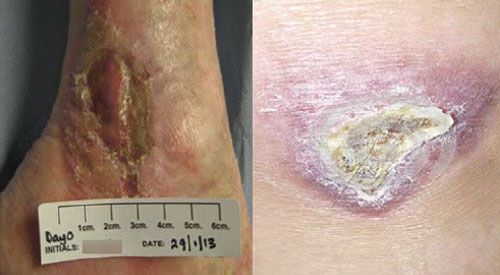
- MIRRAGEN AWM absorbs up to 400 times its weight in wound drainage.
- Allowing the wound base to become dry may cause the wound to desiccate.
- .... And may lead to delayed or impaired healing.
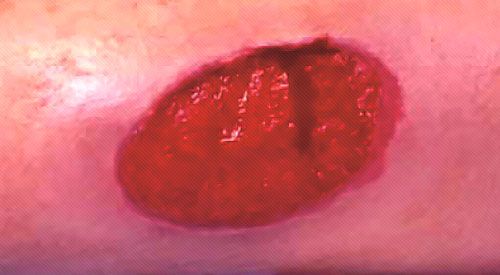
- The "ideal" dressing would maintain a moist healing environment, be absorbent, provide thermal insulation, act as a barrier to bacteria, and be easy to remove (to prevent pain).
- Secondary dressings may be simple and inexpensive (gauze)
Choose one that prov des moisture balance, is comfortable and extends wear time.
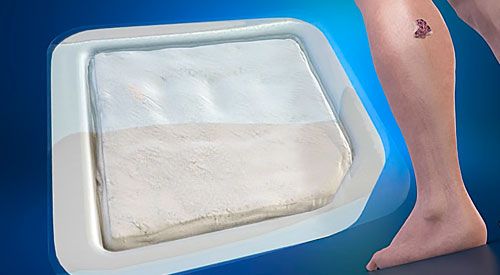
Bordered foam dressings provide ease of use and time savings.
- Absorptive but aids in moisture balance
- Keeps the wound warm and insulated
When using inexpensive gauze toppers
- Securing with transparent film may help facilitate moisture balance.
- If wound drainage is excessive, absorptive gauze, non-occlusive adhesives, gauze wrap, or tubing may be preferred.
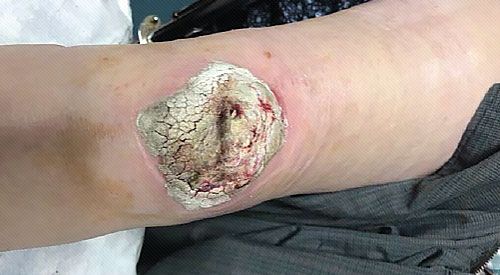
Inspect the wound regularly - every 3 to 7 days
- Change dressings based on amount of drainage/leakage, wound location, size/depth, and patient comfort.
- Frequency of adjunct therapies.
- Otherwise change dressings based on usual wound care practices.
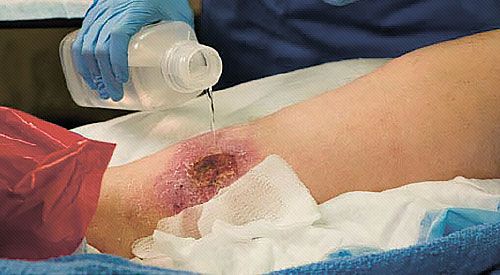
- As with common practice, clean the wound with each dressing change.
- Sterile saline or warm tap water can be used.
- Blot with gauze to remove excessive moisture.
- Remove any loose wound or periwound debris, or callous as usual.
- It is not necessary to fully remove residual MIRRAGEN AWM that has incorporated into the wound tissue.
... To do so may impair healing progress.
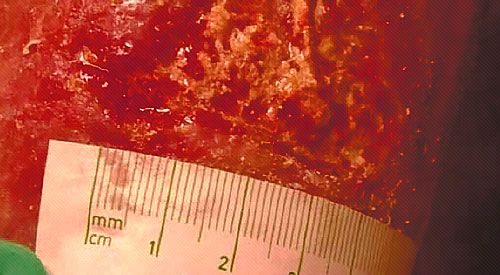
- Once the wound is free from necrotic tissue and MIRRAGEN has been initiated, need for further debridement is unlikely.
- Early in treatment, there may be yellow fibrinous debris within the wound base, this is not necrotic tissue and should not be disturbed.
- This is a normal finding in the healing process with MIRRAGEN as it integrates into the wound tissue.
Additional Information

- As with most products, dressing changes will be determined by wound characteristics and the amount of exudates.
- For a heavily draining wound, an absorptive fiber or foam dressing may be a good choice.
- Remember MIRRAGEN AWM is very absorptive.
- MIRRAGEN alone will usually manage drainage well.
- However, securing under transparent film may lead to excessive moisture unless the wound is dry.
- Dressings should be changed at least weekly to allow for evaluation of healing progress.

- Fill sinus tracts or areas of undermining loosely by tucking MIRRAGEN into those areas.
- For a deep tract, use a long Q-tip applicator to place MIRRAGEN.
- It is not necessary to "fully pack".
- Often areas of undermining and tracts fill with granulation tissue quickly.
- Over-packing will affect the "breakdown" of the borate fibers, reducing the product's effectiveness.
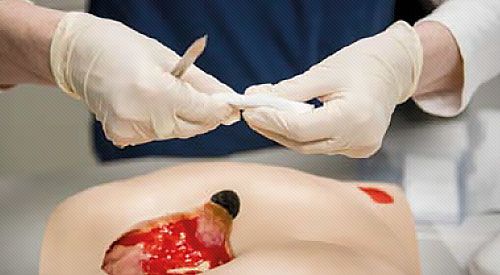
- MIRRAGEN requires no special handling, storage or environment.
- Direct handling or manipulation of the product may allow it to release small particles.
- This should not affect the mechanism of action or healing properties of the product in any way.
- The fiber mesh network may discolor in the wound bed.
- This should not affect the mechanism of action or healing properties of the product in any way.
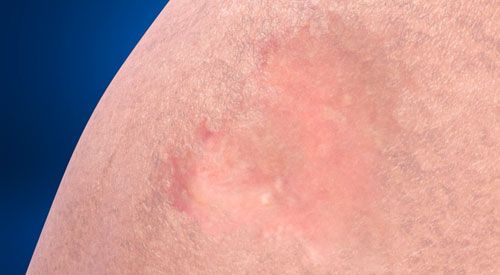
- There is no need to completely remove the MIRRAGEN AWM fiber or its residue from the wound base.
- The product will fully dissolve in wound fluid over time.
- When treatment is complete, simply wash or brush away any loose fiber or particles.
- As with Negative Pressure Wound Therapy, MIRRAGEN AWM may be discontinued when the wound cavity is fully granulated.
- Should healing appear stalled after full granulation is reached, simply stop using MIRRAGEN. The healing process will continue.
- Continue to keep the wound clean, moist and covered until fully epithelialized.
- NEVER remove residual MIRRAGEN fiber matrix - it will fully dissolve.
Cooperate With Us
or via contact phones or email
-
Conveniently
By contacting only one supplier, our customers receive a wide range of products in the shortest possible time.
-
Simple
Our customers are only required to form an order for the supply of products, we will take care of all further tasks
-
Profitable
We save our customers money on import
and delivery taxes
